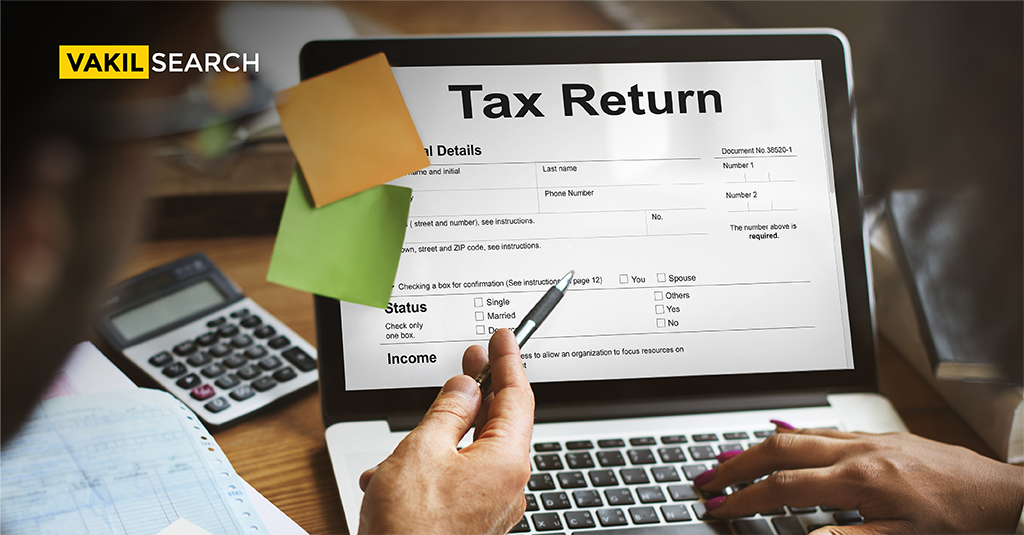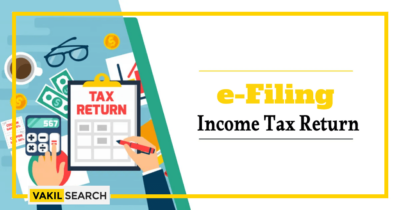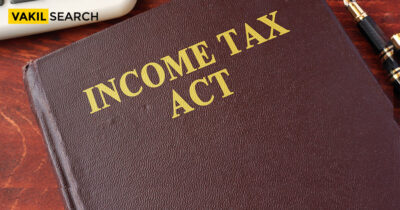Section 2(22)(E) Income tax is all about tax on your income. The word dividend means return earned by a shareholder for investing in a company by purchasing its shares.
The dividend is a branch of Income Tax that deals with the loan provided by the company to its shareholders. The concept of dividend is a term related to company entities in which the common people show very less interest. Section 2(22)(e) of Income Tax works based on dividend theory. Under the Income Tax Act, Dividend includes any type of income irrespective of any big company. This article will help you to learn about the effect of section 2(22)(e) on Income tax.
What is Deemed Dividend?
The meaning dividend means the returns a shareholder receives for investing in a company.
For example, let us say that Company ‘A’ is making sound quantities of total income and needs to distribute the earnings to its shareholders. The board of the company decides to supply 3% returns per share to each shareholder. Each share unit requires a fee of ₹100, and every share of the shareholder receives ₹30. This quantity is called a ‘Dividend’. The deemed dividend is a precise quantity or asset loaned to a shareholder who has a sizable share in that company, and for this reason of taxation, the loaned amount is called a ‘deemed dividend. The asset or development quantity ought to solely be supplied from the collective earnings of the company. It is referred to that alone personal constrained corporation whose activities are no longer of the public’s sizable hobby are eligible for Deemed Dividend.
Applicability
Section 2(22)(e) of the Income Tax is an official order that the deemed dividends are loans or advances extended by a company, which are closely related to the following people:
- The beneficial share of individuals had a minimum of 10% of voting rights to them. It can also be possible that shareholders do not have any fixed dividends.
- The shareholders of the companies are members or partners holding a substantial interest.
- It provides the upper hand for shareholders to the extent of specified law.
Income Tax Implications
Before 1st April 2018, the companies that payout deemed dividends would not need to pay any DDT on such payments. After 1st April 2018, it was made mandatory to repay a DDT amount of around 30% on transactions. This amendment came into action because the taxability of deemed dividends in the hand of recipients made tax collection difficult for the shareholders. Due to this, shareholders do not need to pay any tax on these receipts. In the budget for 2021, the burden of paying taxes is transferred from the company to individual shareholders. Now the companies are not responsible for paying tax on Dividend Distribution Tax while distributing the dividends to the shareholders.
Use the Income tax calculator on Vakilsearch to quickly calculate your taxes and submit your ITR.
Taxability
- Dividend income would experience tax in the year of declaration/distribution/payments. Shareholders did not need to pay any tax on the dividend which they get from the company. Dividend Distribution Tax gets removed from income tax. This theory did not apply to dividends, where shareholders need to pay some marginal tax on them. This theory got changed on 1st April 2020, after that there is no need of giving a dividend distribution tax at the time of giving dividends. This provided relief to the company owners from financial burden and compliance burdens.
- Dividend Distribution Tax (DDT) means the income tax paid by a corporation on the dividends disbursed to members. In the Union Budget introduced on 1st February 2020, the Finance Minister introduced that with impact from 01.04.2020, DDT would no longer be applicable. The tax on dividends would be paid only by individual investors. Due to this, the Government has shifted the burden of dividend taxation from organizations to individuals.
- DDT is a levy of tax that is relevant in addition to the ordinary Income tax return. All Indian businesses are required to pay DDT. The legal responsibility to pay DDT does now not extend to an overseas company. The applicability of DDT will keep correct whether or not the dividend quantity is declared, distributed, or paid. DDT applies to each intermediate and final dividend. The legal responsibility for DDT ought to be met whether or not DDT is paid out of current earnings or amassed profit. There are legal responsibilities for DDT that can be neglected, in case the assessee is a Special Economic Zone (SEZ), Pension Trust, or International Financial Services Centre (IFSC).
- The Government of India has meditated on taking measures to ensure the levy of Dividend Distribution Tax (DDT) on the deemed dividend at the price of 30% in the arms of the intently held groups to dissuade them from hiding dividends in the structure of loans or advances. As deemed dividends under section 2(22)(e) ought to doubtlessly be protected underneath the purview of DDT, the exemption supplied for the latter would be relevant to shareholders, and the unique deemed earnings will no longer be included in the concern of tax.
Exemptions
As per the new rules of the Income-tax Act, the following types of transactions would not need to pay tax under this rule.
- Transaction for advance or loan is made in the regular direction of motion in an enterprise the place cash lending performs a considerable role. However, such an enterprise can solely be operated with an RBI license: https://www.rbi.org.in/ (except for NBFCs).
- Subsequent dividends were paid by the way, of a corporation to the extent of set-off in opposition to any loan or payment previously handled as a dividend. However, such a dividend is taxable if it is no longer set off.
- The payments are made through a business enterprise with the object of purchasing back their shares.
- Some companies started giving their shares to shareholders of the demerged company.
- Inter-corporate deposits.
How Does Deemed Dividend Work?
As per Section 2(22)e of the Income Tax Act, when dealing with a closely held company, where shares aren’t publicly traded, there are specific situations where certain transactions are treated as if the company is distributing deemed dividends to its shareholders.
These transactions will be subject to taxation as if they were dividends paid to shareholders, calculated at 30% of the distributed amount, plus applicable cess and surcharge. A transaction qualifies as a deemed dividend when a closely held company provides a loan or advance to:
- A shareholder holding more than 10% of voting power in the company
- A company in which a shareholder has a significant interest
- For the direct benefit of an individual shareholder
- On behalf of the shareholder to the extent of accumulated profits.
Exceptions to this rule exist. A transaction is not considered a deemed dividend if:
- The loan is a part of the company’s ordinary business activities (e.g., a money lending business)
- The loan is subsequently adjusted against later-declared and distributed dividends.
For instance, if a shareholder, owning 20% of a company’s shares, borrows ₹1,00,000 from the company, it’s categorised as a deemed dividend. Even if the shareholder repays the amount within the same financial year, the transaction remains a deemed dividend, subject to income tax regulations.
Are Deemed Dividends Eligible Or Ineligible?
Deemed dividends may qualify as dividends if they meet all the specified conditions. However, a loan or advance extended by a company to its shareholders is categorised as a deemed dividend, except in the following scenarios:
- When loans and advances are provided from the share premium account
- When loans and advances are offset against declared and distributed dividends
- In cases where the company is engaged in a money lending business
- If the shareholder’s ownership in the company is less than 10%
- When the company is publicly substantially interested, indicating it is not a closely held company.
Between 2018 and 2020, deemed dividends were also subject to DDT (Dividend Distribution Tax) at a rate of 30%.
What Is The Difference Between Deemed Dividend And Actual Dividend?
| Deemed Dividend | Actual Dividend |
| Relevant for privately owned businesses. | Relevant to publicly traded companies. |
| Relevant to loans and advances extended to company shareholders. | Relevant to dividends disbursed to the shareholders. |
| Relevant solely when shareholders possess over 10% of the company’s voting authority. | Relevant to shareholders of all types. |
| The tax rate is 30%, inclusive of any cess and surcharge. | The tax rate is 15% if the dividend exceeds ₹5,000. |
What To Consider Before Declaring Dividends?
Before a company can distribute dividends, it is essential to carefully assess the following aspects:
Tax Deducted at Source (TDS) on Dividends: There is no requirement to deduct TDS from dividend payments
Dividend Distribution Tax (DDT): In the past, companies had to deduct DDT at a rate of 15%, plus cess and surcharge, before distributing dividends to shareholders. However, since 2020, DDT has been eliminated, and shareholders are responsible for including dividend income in their total taxable income when filing their income tax returns
Dividends from Loss-Making Companies: If a company operating at a loss intends to declare dividends, it should take the following factors into account:
- The proposed dividend rate cannot exceed the average rate of dividends declared in the immediately preceding three years, except in cases where the company did not declare dividends in all three of those years
- The total amount of dividends distributed from accumulated profits cannot exceed one-tenth of the total paid-up share capital and free reserves according to the last audited financial statements
- Prior to declaring dividends, any amount drawn from accumulated profits must first cover the losses, with the remaining balance available for dividends
- After dividend distribution, the reserves should not be reduced to less than 15% of the paid-up share capital as per the last audited financial statements.
Determining Conditions
There are the following conditions that determine the taxability of dividends:
- While the receiving organization can be public or listed, the paying corporation must no longer be a closely held company.
- The loans or advances so prolonged with the treatment of the organization should no longer be in the everyday direction of the business.
- The shareholder should have assigned the employer as a creditor.
- The dividend would solely be acted as, to the extent of collected earnings of the enterprise (accumulated income refers to all the industrial income of an employer up to the date of distribution/payment/liquidation).
Conclusion
Now many company owners feel relaxed as the burden of paying tax on dividends is shifted to individuals. They all need to pay a tax of around 30% on their dividend. It is beneficial for all the closely held companies with shareholders. For more information related to this topic, get in touch with the legal experts of Vakilsearch.
Read More:
- How to File Income Tax Returns in India ?
- What is the meaning of Self Assessment Tax?
- How to pay TDS for Interest on Fixed Deposit?
- Complete details on different types of ITR
- Section 8 Company and its Income Tax Compliances
- What Is an Income Tax Return?
- Complete the Procedure to File Income Tax Return
- Importance of Income Tax Filing in India










